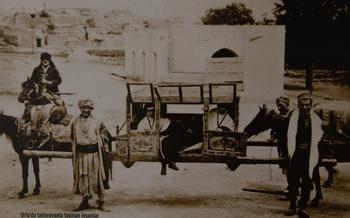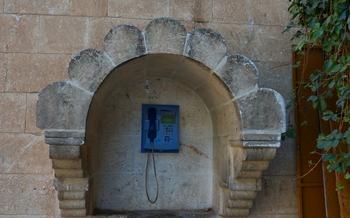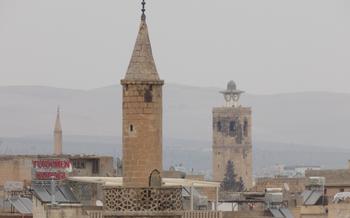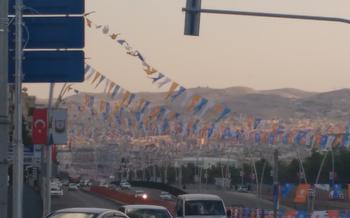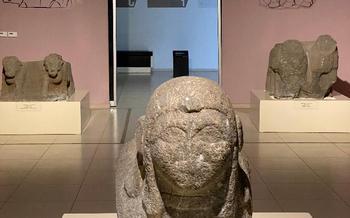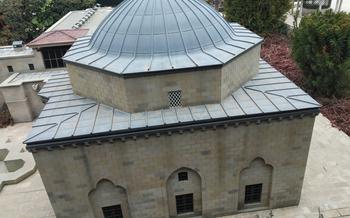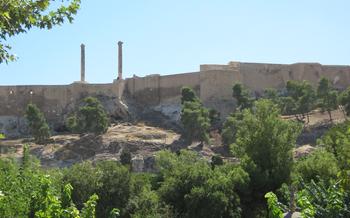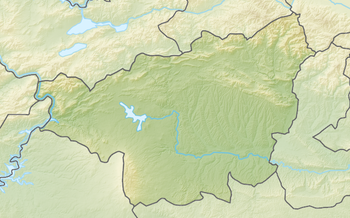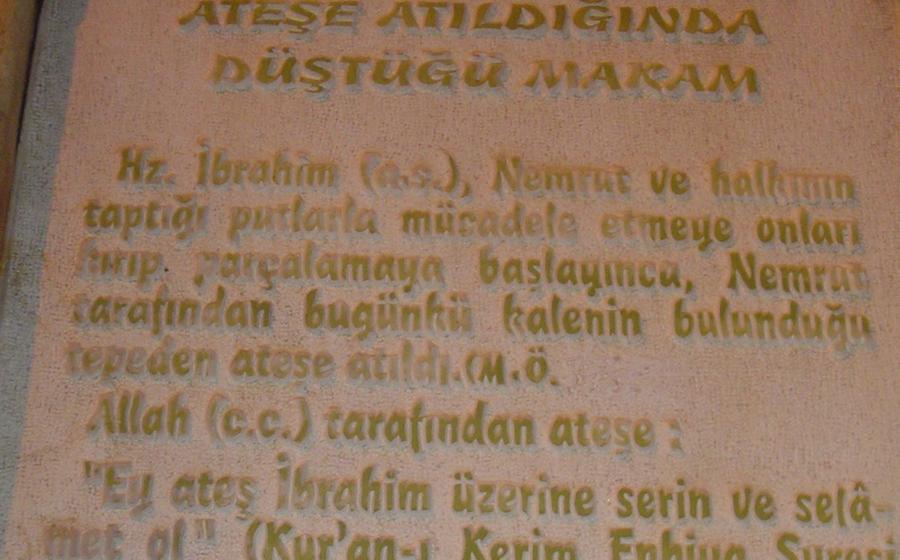
Balıklıgöl Cave
- History of the Balıklıgöl Cave:
- Religious Importance
- Natural Beauty
- Mythology and Legends
- Excavations and Discoveries
- Local Traditions
- Visiting the Cave
- Respecting the Sacredness
- Local Cuisine
- Nearby Attractions
- Photography and Videography
- Sustainable Tourism
- Insider Tip: Unveiling the Secret Chamber
History of the Balıklıgöl Cave:
The Balıklıgöl Cave, also known as the "Cave of the Fish," holds immense historical significance as a sacred site revered by various religions throughout the centuries. According to legend, the cave was formed when the Prophet Abraham's tears fell onto the ground, creating a subterranean lake. Over time, the cave became a pilgrimage site for followers of Islam, Christianity, and Judaism, who believed in the healing powers of the cave's waters and the sacred fish that inhabited them.
Architectural features within the cave further enhance its uniqueness. The cave's ceiling is adorned with stunning stalactites and stalagmites, formed by the slow dripping of water over millennia. The underground lake, known as the "Pool of Abraham," is renowned for its crystal-clear water and vibrant colors, owing to the presence of unique minerals and algae. The cave's walls feature ancient inscriptions and carvings, providing glimpses into the diverse civilizations that have revered this sacred site.
Religious Importance
The Balıklıgöl Cave holds profound religious significance for adherents of Islam, Christianity, and Judaism. In Islam, it is believed that the Prophet Abraham was thrown into a fire by Nimrod, a tyrannical ruler, but was miraculously saved by God. The fire is said to have turned into a lake, and the fish in the lake are believed to be the descendants of the fish that witnessed the miracle.
For Christians, the cave is associated with the story of the Seven Sleepers, a group of young men who sought refuge in the cave to escape persecution. They fell asleep and awoke centuries later, symbolizing resurrection and eternal life.
In Judaism, the cave is believed to be the site where the prophet Elijah hid from King Ahab and Queen Jezebel. It is also associated with the story of Jonah and the whale, as some believe that the fish that swallowed Jonah may have been from the cave's lake.
Pilgrims and visitors from different faiths come to the cave to pay homage, seek blessings, and connect with their spiritual beliefs. The cave serves as a symbol of interfaith harmony and tolerance, where people of diverse backgrounds come together to share a common space of reverence and devotion.
Natural Beauty
The Balıklıgöl Cave boasts an array of natural wonders that captivate visitors. Within its depths lies a mesmerizing underground lake, its crystal-clear waters reflecting the shimmering light that filters through the cave's crevices. The lake is home to a vibrant ecosystem, including colorful fish that gracefully glide through the water, adding a touch of enchantment to the scene. Stalactites and stalagmites, formed over millennia by the patient dripping of water, create an ethereal ambiance, transforming the cave into a subterranean work of art. The unique geological formations, coupled with the play of light and shadow, produce a symphony of natural beauty that leaves visitors in awe.
Mythology and Legends
The Balıklıgöl Cave has accumulated a rich tapestry of myths and legends over the centuries, captivating the imaginations of locals and visitors alike. One prominent legend speaks of the creation of the cave and the lake by a mythical creature known as the Simurgh, a benevolent bird with the power to shape the earth. According to this tale, the Simurgh created the cave as a sanctuary for itself and its offspring, and the lake formed from its tears as it mourned the loss of its mate.
Another legend tells of a young shepherd named Ibrahim who discovered the cave while searching for his lost sheep. As he entered the cave, he encountered a group of mythical creatures known as the Huri, who were said to be guardians of the sacred fish. The Huri granted Ibrahim three wishes, and he asked for wealth, happiness, and the power to heal the sick. His wishes were granted, and he returned to his village as a revered figure, using his newfound abilities to help those in need.
Local folklore also recounts tales of mythical creatures, such as dragons and genies, who are said to inhabit the cave and its surroundings. These creatures are often depicted as protectors of the site, ensuring its sanctity and guarding its secrets. The Balıklıgöl Cave thus remains a place steeped in mystery and wonder, where the real and the mythical intertwine, captivating visitors with its enchanting narratives.
Excavations and Discoveries
Archaeological excavations conducted in the Balıklıgöl Cave have unearthed a treasure trove of ancient artifacts, inscriptions, and remnants of past civilizations. These discoveries have shed light on the historical and cultural significance of the site, providing valuable insights into the lives and beliefs of those who once inhabited this sacred space.
Among the most notable findings are ancient coins, pottery shards, and jewelry, which suggest that the cave was once a place of worship and pilgrimage for people of various faiths. Inscriptions in different languages, including Greek, Hebrew, and Aramaic, have also been discovered, further attesting to the cave's diverse religious associations.
Perhaps the most intriguing discovery was a series of underground chambers and tunnels, hidden beneath the cave's main chamber. These chambers contain remnants of ancient altars, frescoes, and mosaics, providing tantalizing clues about the rituals and ceremonies that may have taken place within the cave.
The excavations have also revealed evidence of human habitation dating back to the Neolithic period, suggesting that the cave has been a place of refuge and shelter for thousands of years. These findings have contributed to a deeper understanding of the rich history and cultural heritage of the Balıklıgöl Cave.
Continuing archaeological research at the site promises to reveal even more secrets about this ancient and sacred place, offering valuable insights into the lives and beliefs of our ancestors.
Local Traditions
The Balıklıgöl Cave holds a special place in the hearts of the local communities of Şanlıurfa. Over the centuries, various cultural practices and traditions have developed around this sacred site, adding to its mystical allure. Pilgrims from different faiths gather at the cave to perform rituals, ceremonies, and festivals throughout the year.
One of the most prominent local traditions associated with the cave is the belief in the healing powers of the sacred fish. Many visitors make wishes and feed the fish, hoping for blessings and good fortune. The fish are considered sacred and are treated with great respect by the locals.
During special religious occasions, such as the Islamic holy month of Ramadan, the cave becomes a hub of activity. Devout Muslims flock to the site to offer prayers, recite verses from the Quran, and seek spiritual guidance. The cave's serene atmosphere and historical significance make it an ideal place for contemplation and reflection.
Local artisans, musicians, and performers often gather at the cave to showcase their talents. Visitors can witness traditional music performances, storytelling, and henna painting demonstrations. These cultural displays provide a glimpse into the rich heritage of the region and allow visitors to connect with the local community.
By participating in local traditions and rituals, visitors can gain a deeper understanding of the cultural and religious significance of the Balıklıgöl Cave. These experiences foster a sense of respect for local customs and traditions, creating a more meaningful and immersive travel experience.
Visiting the Cave
Visiting the Balıklıgöl Cave is an experience that combines history, spirituality, and natural beauty. Before embarking on your journey, it's essential to plan your visit and prepare for a truly enriching experience. The cave is generally open to the public every day, with varying hours depending on the season. Admission fees are minimal, and there are guided tours available for a more in-depth exploration.
To fully appreciate the cave's charm, it's advisable to allocate at least two hours for your visit. Arriving early in the morning or late in the afternoon is recommended to avoid crowds and capture the most stunning light conditions. The cave's interior is well-lit, allowing visitors to navigate safely and admire its intricate formations. Photography and videography are permitted, but using flash is discouraged to preserve the ambiance and protect the cave's delicate ecosystem.
While inside the cave, take your time to marvel at the natural formations, observe the sacred fish, and soak in the spiritual atmosphere. Follow the designated paths and walkways to ensure your safety and minimize your impact on the environment.
After exploring the cave, take a moment to relax and reflect in the peaceful garden at the entrance. Here, you can enjoy the tranquility of the surroundings, feed the fish, and make a wish by tossing a coin into the lake.
Remember, the Balıklıgöl Cave is not just a tourist attraction but a sacred site for many. Be mindful of your behavior and dress appropriately, respecting the religious and cultural significance of the place. Your visit to the Balıklıgöl Cave will undoubtedly leave a lasting impression, inspiring a deeper appreciation for the beauty and diversity of Turkey's cultural and natural heritage.
Respecting the Sacredness
The Balıklıgöl Cave holds immense religious and cultural significance for people of different faiths. It is essential to approach the site with respect and understanding to preserve its sanctity and ensure a meaningful experience for all visitors.
As a visitor, it is important to dress modestly and refrain from wearing revealing or inappropriate clothing. This is a sign of respect for the religious beliefs and customs associated with the cave.
While in the cave, maintain a respectful and quiet demeanor. Avoid loud conversations or disruptive behavior that may disturb the peace and tranquility of the site. Remember that the cave is a place of worship and reflection for many people.
It is important to be mindful of the environment and avoid leaving trash or causing any damage to the natural formations within the cave. Respect the wildlife, including the sacred fish, and refrain from touching or disturbing them.
By following these guidelines and showing respect for the cave's sacredness, visitors can contribute to preserving its unique atmosphere and ensuring that future generations can continue to experience its spiritual and historical significance.
Local Cuisine
Visiting Şanlıurfa provides an opportunity to indulge in a culinary adventure that showcases the flavors and traditions of this vibrant region. While exploring the city, be sure to tantalize your taste buds with local delicacies that are unique to this part of Turkey.
For a truly authentic experience, venture into the heart of the city's bustling markets, where you can find a treasure trove of street food vendors and local eateries. Sample the mouthwatering Şanlıurfa kebab, a specialty dish consisting of grilled lamb or beef skewers seasoned with local spices.
Another must-try is çiğ köfte, a unique dish made from bulgur, minced meat, and a blend of spices, often served with fresh herbs and vegetables. For a sweet treat, don't miss the künefe, a traditional dessert made from shredded filo dough filled with melted cheese and topped with sweet syrup.
To fully immerse yourself in the local cuisine, consider visiting one of the many restaurants that offer traditional Şanlıurfa dishes. Indulge in a leisurely meal and savor the flavors that have been passed down through generations.
Remember to embrace the local culinary culture by trying new dishes with an open mind. Ask for recommendations, engage with the locals, and let your taste buds guide you on a journey of culinary discovery.
Nearby Attractions
Beyond the Balıklıgöl Cave, Şanlıurfa offers a treasure trove of historical and cultural attractions. The city is home to the renowned Göbeklitepe, an archaeological site that boasts 12,000-year-old megalithic structures, predating Stonehenge and the Egyptian pyramids. This UNESCO World Heritage Site offers a glimpse into the origins of human civilization and is a must-visit for history enthusiasts.
If you're interested in exploring further, consider embarking on a day trip to the ancient city of Harran. Located about an hour's drive from Şanlıurfa, Harran boasts a unique landscape of beehive-shaped houses, a testament to the region's rich cultural heritage.
For a more immersive experience, opt for a guided tour that takes you through the intricate alleys of Harran, where you can learn about the fascinating history of this ancient settlement. Whether you choose to visit Göbeklitepe, Harran, or both, these nearby attractions offer a chance to delve deeper into the captivating history and culture of Şanlıurfa and the surrounding region.
Photography and Videography
Respecting the Sacredness:
When capturing the beauty of the Balıklıgöl Cave through photography or videography, it is essential to be mindful of the site's sacredness and cultural significance. Visitors should always seek permission from local authorities or religious leaders before taking any photos or videos, especially if they intend to use the footage for commercial purposes.
Guidelines for Responsible Photography and Videography:
-
Respectful Approach: Be considerate of other visitors and worshippers by avoiding using flash photography or disruptive equipment that may disturb the serene atmosphere of the cave.
-
Capturing the Essence: Focus on capturing the natural beauty and unique features of the cave, such as the stalactites, stalagmites, and the sacred fish, without compromising the sanctity of the site.
-
Cultural Sensitivity: Be respectful of the local culture and traditions by avoiding taking photos or videos of people without their consent. Always ask for permission before capturing images of individuals, especially women.
-
Sharing Experiences: Share your photos and videos responsibly by providing accurate captions and context that respect the cultural and religious significance of the Balıklıgöl Cave. Avoid sensational or disrespectful content.
Tips for Enhancing Your Photography:
-
Natural Lighting: Take advantage of the natural light that filters into the cave to create stunning shots. Experiment with different angles and perspectives to capture the interplay of light and shadow.
-
Composition Techniques: Use composition techniques such as leading lines, symmetry, and depth of field to create visually appealing images that convey the grandeur and mysticism of the cave.
-
Respecting the Environment: Be mindful of your impact on the cave's fragile ecosystem. Avoid using tripods or other equipment that may damage the delicate formations or disturb the sacred fish.
By following these guidelines, visitors can capture the beauty of the Balıklıgöl Cave while respecting its religious and cultural significance.
Sustainable Tourism
As a responsible traveler, it's crucial to minimize your environmental impact while visiting the Balıklıgöl Cave. Respect the natural beauty of the cave by avoiding littering and using eco-friendly products. Support local businesses that prioritize sustainability, such as hotels, restaurants, and tour operators committed to responsible tourism practices. By choosing sustainable options, you contribute to preserving the cave's natural and cultural heritage for future generations. Embrace the principles of sustainable tourism to ensure the cave remains a sacred and awe-inspiring destination for years to come.
Insider Tip: Unveiling the Secret Chamber
Beyond the main tourist trail lies a hidden chamber within the Balıklıgöl Cave, known only to a select few. This concealed sanctuary, tucked away from the crowds, offers a glimpse into the cave's ancient past. Follow the narrow passageway, illuminated by flickering candlelight, and discover a chamber adorned with enigmatic symbols and inscriptions. Here, you can feel the weight of history and imagine the rituals and ceremonies that may have taken place in this sacred space.
